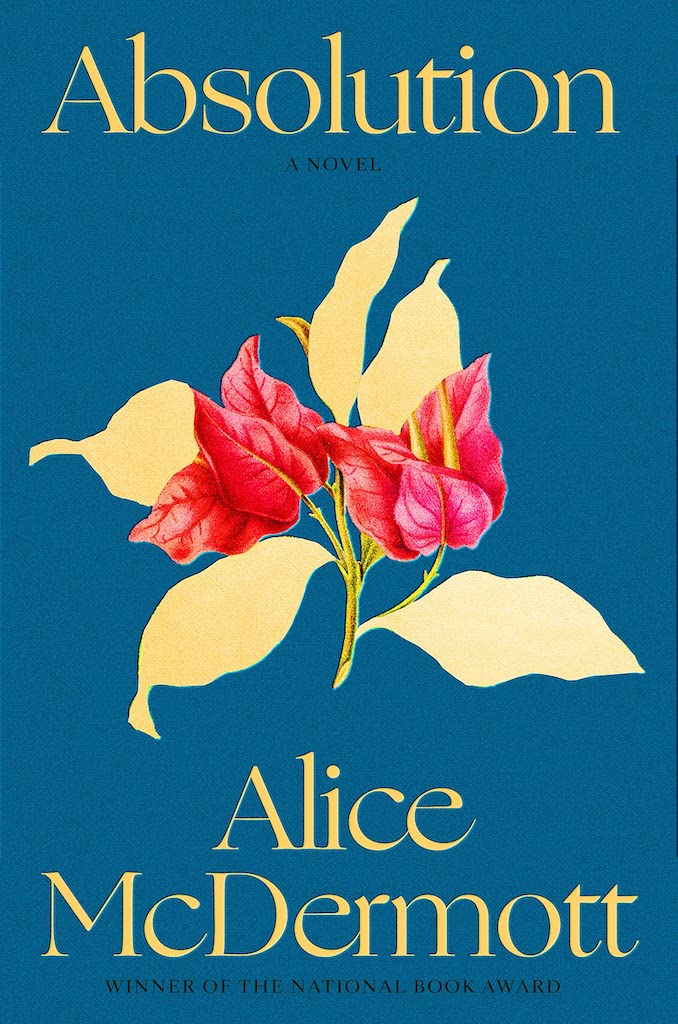Alice McDermott and Absolution
I first learned about Alice McDermott and her fiction in the early 1990s when her nephew, a student of mine at JMU, gave me a signed copy of her novel At Weddings and Wakes, a finalist for the Pulitzer Prize. Much later, in March 2019, McDermott came to JMU for a public conversation with John Griffin in a Writers’ Series organized by Inman Majors. Her performance was impressive: she spoke with intelligence, honesty, warmth and modesty.
Born into a traditional Irish Catholic family in Brooklyn, New York, McDermott was educated in Catholic schools on Long Island. Like many other writers, McDermott began to write as a child. In an interview, she says that she grew up with two brothers: “As a child it was difficult to complete a sentence at the dinner table. But if I wrote, I could make up brothers who were in awe of the brilliance of their younger sister.” In 1975, McDermott earned a BA degree from the State University of New York at Oswego and, three years later, an MA degree from the University of New Hampshire.

Since 1982, McDermott has written nine novels, including Absolution, published just last year. Her novel, Charming Billy won the National Book Award in 1998; she was inducted into the New York Writers Hall of Fame in 2013. Through the years, she taught at several colleges including Lynchburg and Hollins in Virginia; she is currently Richard A Macksey Professor in the Writing Seminars at John Hopkins University. Married to David Armstrong, a neuroscientist, she is the mother of three children. She lives in Bethesda, Maryland.
As a “cradle Catholic,” McDermott has maintained her faith and joined other Catholic women writers including Caroline Gordon, Flannery O’Connor, Louise Erdrich and Donna Tartt. In her fiction, she contrasts traditional Catholicism with changes that occurred after the 1961 Encyclical of Pope John XXXII. McDermott creates mostly younger women characters, brought up in the Catholic tradition, but looking change their lives, including their religious practice.
A review of three of McDermott’s novels reveals considerable progress in her work and in her outlook on Catholicism. Her second novel, That Night (1987), set In New York in a middle class suburban neighborhood around 1960, is a coming of age novel told from the dual perspective off a young girl and the mature woman she becomes. McDermott’s use of narrator-observers is a continuing feature of her work; they are usually women who witness events around them and grow in the process.
The narrator of That Night relates events that occurred when she was about ten—events that changed her and the neighborhood forever. An admired teenager become pregnant; the girl’s shocked mother immediately sends her to relatives in Ohio to the distress of her abandoned boyfriend. He, with his “posse,” wreaks havoc on the girl’s family. As a ten year old Catholic, the narrator has only limited understanding of any of this, but as she grows older, she becomes wiser.
A disgruntled, unhappy Catholic family is central in At Wedding and Wakes (1992). McDermott tells their story through the perspective of three children who puzzle over the troubled lives of their mother’s family, a collection of four girls, raised by their mother’s sister, when their birth mother dies after giving birth to the fourth daughter. Each sister is traumatized. A sense of Catholic control dominates the novel. .
Absolution (2023) may be McDermott’s strongest novel to date. Set in the immediate present, the novel is narrated by Tricia, an aging woman brought up by devout Catholics and married to a man with even more traditional ideas than hers. The
main action of the novel takes place in Saigon early in the Viet Nam War and displays both the naivety of US political involvement there and of the woman characters of the novel. They are the wives of military men or of civilians sent by their companies as advisors to the US military.
Absolution explores the changes in these women’s lives brought on by the women’s movement of the Sixties, the general unrest of the period, and their ignorance of the realities of their situation in Saigon. They patronize the servants who “come with” the mansions they live in and glory in their American superiority. The naïve Tricia succumbs to these influences.
In Saigon, she becomes friends with Charlene, a vivacious young wife who wants more than marriage and her three children. Had she been born a generation later, the dynamic Charlene may have become a business executive. In Saigon, she combines her need for power and money with a complicated desire to “help” the poor women and children of the city. Tricia becomes her hesitant accomplice in these ultimately failed ventures. A Barbie doll, owned by Charlene’s daughter Rainey, becomes central to one of her mother’s schemes.
A strong scene in the novel occurs in a charity hospital where Charlene and Tricia go to offer un-needed and unwanted gift bags to suffering children. Another takes place in a leper colony operated by French nuns. Charlene’s plans to “repair the world” go awry, but significant bonds form among her, Tricia, and Lily, a talented Vietnamese seamstress. As a devout Catholic, Tricia longs for children, as mandated by the Catholic Church; an early miscarriage brings her, Lily, and Charlene closer together as Tricia struggles to accept the reality of remaining childless.
The structure of the novel is particularly interesting. Tricia’s narration takes the form of an extended letter—she is writing to Charlene’s daughter Rainey who narrates a late section of the novel. The title, Absolution, identifies Tricia’s attempt to explain her early naivety and to atone for earlier mistakes. Rainey, of a later generation, welcomes Tricia’s letters but with limited understanding. Reviewer, Heller McAlpin accurately applauds McDermott’s ability to combine the “personal” and the “political” with moral “sensitivity” in her latest novel.





























